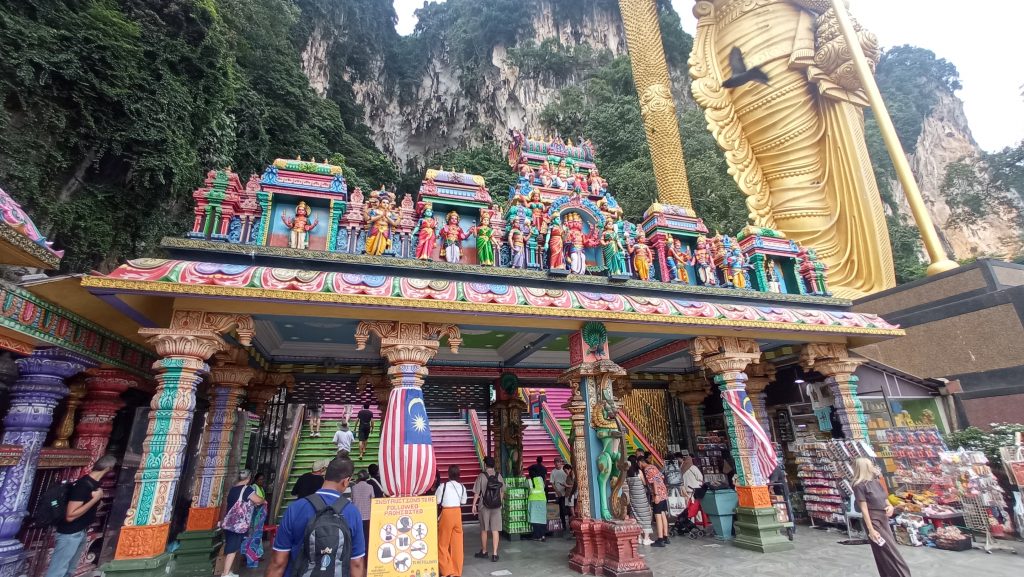
Spiritual Journey Through Architecture: Exploring Diversity and Meaning in Selangor and Putra Jaya
Spiritual Journey Through Architecture: Exploring Diversity and Meaning in Selangor and Putra Jaya
Faculty of Letters
Department of Art and Design
August 18, 2024
Learning and Students, Student Learning and Activities
SDG 11
On 16 August 2024, Yon Ade Lose Hermanto, S.Sn, M.Sn, delivered an in-depth study titled “Spiritual Journey Through Architecture: Exploring Diversity and Meaning in Selangor and Putra Jaya” in Selangor and Putra Jaya, Malaysia. The presentation explores how architecture can be a medium for spiritual and cultural experiences through case studies of two important landmarks: Batu Caves and Putra Jaya Mosque.
Batu Caves, located in Selangor, is a Hindu temple complex that utilizes natural caves as a place of worship. Hermanto explained that the architecture of Batu Caves not only functions as a religious space but also as a form of deep spiritual expression. The caves that house the temples provide a unique sacred atmosphere, where every element of the design, from the statues of gods to the reliefs that adorn the cave walls, convey spiritual narratives and Hindu mythology.
The spiritual experience at Batu Caves is strongly influenced by the interaction between architecture and the natural environment. The design adapts the natural cave form to create a space that is directly connected to the natural elements, offering a very immersive experience for visitors and worshippers. This shows how architecture can embrace and strengthen religious meaning through the existing natural context.
On the other hand, the Putra Jaya Mosque in Putra Jaya, Malaysia, offers a different spiritual experience through its architectural design that combines contemporary Islamic elements with a local Malaysian touch. Hermanto describes how the mosque uses large domes and minarets as symbols of grandeur and majesty, while local design elements such as traditional Malaysian carvings add cultural depth to the structure.
The spiritual experience at Putra Jaya Mosque is supported by the use of modern materials such as concrete that symbolize stability and progress, combined with details that reflect Malaysia’s national identity. The design of the mosque serves not only as a place of worship but also as a symbol of cultural integration and modernity, creating a space that inspires and unites various cultural influences.
Yon Ade Lose Hermanto’s presentation revealed that both Batu Caves and Putra Jaya Mosque demonstrate how architecture can be a medium for profound spiritual experiences. Through the use of local materials, adaptation to the natural context, and integration of cultural elements, these two structures create spaces that not only fulfill a religious function but also offer a rich and complex spiritual journey.
These two case studies demonstrate how architecture, with its careful and contextual design, can serve as a bridge between humans and their spiritual dimensions. By harnessing the uniqueness of culture and environment, architecture is able to convey profound messages and provide soul-touching experiences, making it a powerful tool for spiritual and cultural expression.
